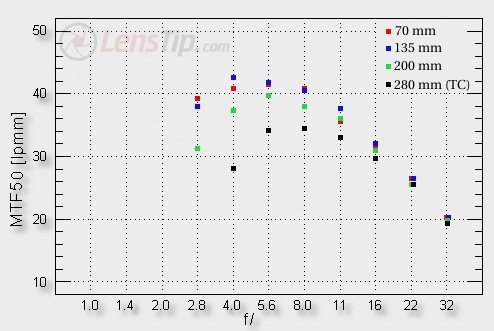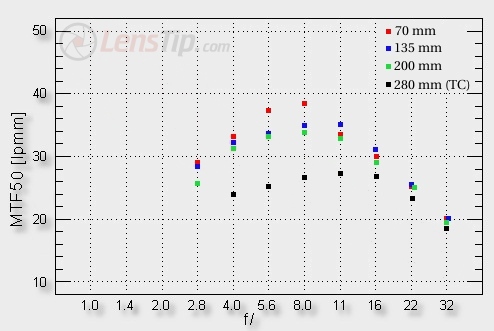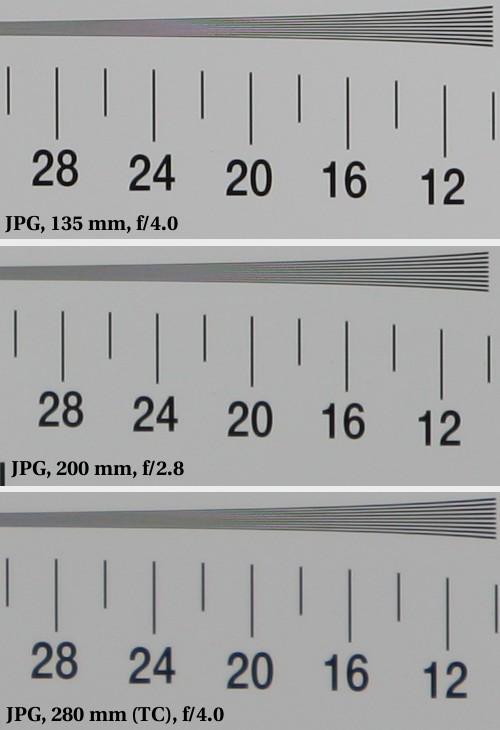Canon EF 70-200 mm f/2.8L USM
4. Image resolution
Let’s see how the EF 70-200 f/2.8L USM performs in the frame centre.

Please Support UsIf you enjoy our reviews and articles, and you want us to continue our work please, support our website by donating through PayPal. The funds are going to be used for paying our editorial team, renting servers, and equipping our testing studio; only that way we will be able to continue providing you interesting content for free. |
- - - - - - - - - - - - - - - - - - - - - - - - - - - - - - - - - - - - - - - - - - - - - - - -
At 70 mm the graphs of the stabilized and not stabilized model are virtually identical, of course within the margin of error. Both lenses present here a performance which can be undoubtedly called outstanding. Interesting things happen at 135 mm. The stabilized Canon fared here a bit worse than at 70 mm whereas the EF 70-200 f/2.8L USM - a bit better, presenting a really sensational level straight from the maximum relative aperture. The 200 mm focal length is again very similar to that of the stabilized model. What’s interesting, the model without stabilization cooperates with the TC 1.4x converter much better but still it lags behind the Canon EF 70-200 f/4L IS USM.
Overall, in the frame centre the EF 70-200 f/2.8L USM performed a bit better than its stabilized equivalent. The differences are slight and they would be rather difficult to notice in real photos; they are the most visible at 135 mm focal length and after connecting to the converter.
How does the situation look at the frame edge? Let’s consult the picture below.

Here the situation is different although the differences are once again rather not very significant. Both lenses fare almost identically at 70 and 200 mm and after connecting to the converter. What’s interesting, at 135 mm the order is reversed – the stabilized model is a bit better for a change.
Our test results seem to explain why the users have had so many problems with choosing which of these L-series Canon lenses is better. Firstly, the differences are really slight – you can notice them in the test charts but it is really much more difficult in real pictures. Secondly, the model without stabilization, compared to its stabilized equivalent, fares a bit better in the frame centre but a bit worse at the edge. This effect can be the source of contrary opinions because the results depend on the focal length and the object of your assessment. There is no clear winner of this duel but you can confidently say that both lenses perform very well allowing you to take really sharp photos at all focal lengths and even at the maximum relative aperture; they certainly meet the requirements for professional lenses of the highest class.







